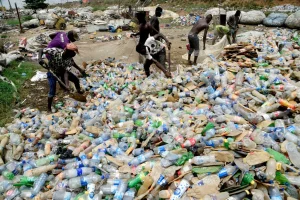Introduction
In today’s world, e-business and e-economy are booming industries, but with that growth comes a significant downside: the rise of e-waste. This term defines any electrical and IT devices that are no longer used or have been rendered unusable by technological advancements. Consumer electronics, computers, and other communication and electrical products have significantly been the driving force to the global concerns of e-waste.. The proliferation of computing and communication devices, along with other electrical goods, is largely responsible for the global surge in e-waste (Boubellouta and Kusch-Brandt, 2021).
Think of old PCs, TVs, smartphones, and more—all contributing to this mounting issue. E-waste comes in many forms, from PCs and TVs to smartphones and printers, and it’s typically divided into two categories: Information Technology (IT) and Consumer Electronics (CE). The challenge with e-waste lies in its disposal. While IT products often have components that can be salvaged and reused, the same isn’t true for many CE items. They often lack the economic incentive for recycling and end up being dumped, posing environmental risks. So, while there’s potential value in salvaging components from IT products, the CE category presents a more complex problem—one that requires innovative solutions to minimize its negative impact on the environment..
E-waste and Global Impact
E-waste is one of the fastest-growing categories of waste (Awasthi et al., 2018). The substantial accumulation of electronic waste (e-waste) from post-consumer electronic devices has sparked apprehension regarding its hazardous implications. In 2016 alone, the global generation of e-waste amounted to an estimated 44.7 million metric tonnes, as reported by Baldé et al. (2017). United States generates the second highest amount of Waste from Electrical and Electronic Equipment (WEEE) after China with a generation rate of 6.9 MT/year and per capita generation of around 19-20 kg/person/year (Shittu, Williams, and Shaw 2021). This implies that with the increase in the WEEE generation rate, toxic metals and other hazardous substances will be emitted more into the environment, and at the same time, valuable resources will be consumed more which would increase the need to recycle and recover them (Zeng et al. 2016). Unfortunately, only 20% of the total E-waste is collected and recycled.
E-waste and Sustainable Development
The 2030 Agenda for Sustainable Development was adopted in September 2015 by the United Nations and its member states. The agenda included 17 Sustainable Development Goals and 169 targets to end poverty, protect the planet, and ensure prosperity in the world. It is related to SDG 3, to improve public health and well-being, as E-waste contains many hazardous substances and toxic constituents. The effects of material extraction and increased mining operations pose significant health and environmental impacts (Meloni et al., 2018). Huge amounts of water and energy are used for mining and manufacturing of electronic devices and the demand for resources increases the chance of unsafe working conditions. Improper handling and recycling methods can also increase public exposure to toxic chemicals and hazardous substances.
Circular Economy Models
E-waste generation and its management is a serious issue worldwide, especially in developing countries. We need to tackle the e-waste issue from various sectors to not only deal with its harmful effects on the environment and human health but also to support the global economy and conserve resources sustainably. It’s about finding a balance between the negative impacts of recycling e-waste and the allocation of resources..
The concept of a circular economy offers a promising solution by aiming to slow down the consumption of electrical and electronic equipment (EEE) through smarter product design and business models. This approach, advocated by Ali and Shirazi (2023), involves the “7 R’s” system: reducing, reusing, refusing, recycling, recovering, rethinking, and redesigning..
Conclusion
The circular economy goal is to reduce waste by making products more efficient and finding ways to recycle materials so they can be used again. It’s all about finding smarter, more sustainable ways to manage resources.. This ensures they remain in use for as long as possible, preserving their utility and value (Ellen MacArthur Foundation, 2019). While the concept of a circular economy is considered crucial for the generation and management of e-products, it necessitates a collaborative effort across various sectors, including businesses, governments, and consumers (Henriques et al., 2023). Mr. Oreolorun Titobiloluwa Oluwayomi, the founder of Justusedtech, aims to build a society where a circular economy is encouraged by reusing devices and also upcycling them to build a digital divide. He believes that a circular economy can be a great tool for eradicating the ever-growing problem of e-waste in the world.
Oreolorun Titobiloluwa Oluwayomi
